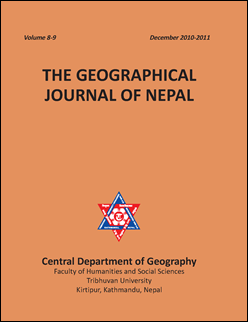Biodiversity and Livelihood of the Pangre Jhalas Wetland, Morang District, Nepal
DOI:
https://doi.org/10.3126/gjn.v9i0.17472Keywords:
Wetlands, Wetland activities, Threats, Fish, BiodiversityAbstract
There are different wetland ecosystems, different resources, diversity of environment and habitat, and diversity of resource user groups in a region. Local communities exploit these resources and incorporate them into their livelihood strategies. Among these biological diversities, fish are most important and most noticeable wetland resources because they pass through markets and have a recognized role in food supply. Indigenous communities depend on exploiting wetland fisheries. Since past few years, wetlands are degrading rapidly. Poor indigenous communities still relay on catching fish. These communities have characterized by unsuitable living conditions, low level of education, lack of skills and assets and inadequate services which would permit diversification of their livelihoods. We can notice such peculiar activities around the Pangre Jhalas wetland.
The Geographical Journal of Nepal, Vol. 8-9, 2010-2011: 63-72
Downloads
Downloads
Published
How to Cite
Issue
Section
License
© Authors




